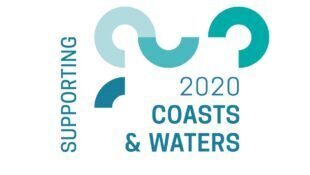St Abb’s Head seal colony welcomes record number of pups
A final total of 1,806 pups have been counted, which shows an extraordinary explosion in the seal population. Grey seals breed on the National Nature Reserve from October to December, and we’re now keen to carry out further studies and determine the exact reason for this rapid rise.
Ciaran Hatsell, Head Ranger at St Abb’s Head, says: ‘It really is an incredible story. I have worked in wildlife for some time and have been studying seal colonies for the past 10 years and I’m amazed by how this population has risen.
‘Grey seals are one of the rarest seals in the world. There’s a global population of roughly 300,000 and in the UK we have around 45% of that. To have this rise here is very special and I feel very privileged to be able to count and work with these animals. If you go back to 2007, there was no colony here at all. Today, the population is still growing, which shows that the ecosystem is healthy and that they have plenty of food in the area.
‘It’s hard to draw conclusions about the sudden rise without the science or data behind it, but we can suggest it’s down to lack of disturbance or that the seals have come from another North Sea colony that has reached capacity. There is so much that we still have to learn and, in many ways, that’s quite refreshing.’
Two counts are carried out at St Abb’s Head in the peak of the pupping season in mid-late November, with most of the pups counted by using binoculars. In the bigger colonies, high-resolution images are taken and the pups are counted from the photographs. The same process has been carried out each breeding season since 2015 and Trust staff have reported a steady year-on-year rise.
‘Monitoring the populations of wild animals is more important now than it ever has been on this rapidly changing planet,’ continued Ciaran. ‘The work we do here is vital to our understanding of population dynamics and of the wider natural world. If we know what is here, then we can make plans to protect it.
‘These animals are biological indicators of the health of our wider marine ecosystem, as they are the apex predator. If they’re doing well, it’s a positive sign. And don’t we all need a bit of positivity at the moment!’
Ciaran added: ‘The possibilities are endless, but we have to be realistic about what funding is out there at the moment and the challenges facing all organisations at the moment.’
Some of the beaches at St Abb’s Head are sheltered by surrounding cliffs and are largely inaccessible to the general public, providing a safe haven for the growing pups and their mothers. Seals are rarely seen on the beaches outwith the breeding season, and the colony is expected to leave the site in the weeks leading up to Christmas when pupping has reached an end and the new arrivals have moulted their distinctive white fur.
We ask for visitors to view the seals from a distance. On the stretches of the coastline where the beaches are flanked by footpaths, electric fences have been installed to ensure a safe space for the colony where they’re not disturbed by people or dogs.
‘The fencing is essential to protect the seals because the area is a popular dog walking spot,’ explains Ciaran. ‘In the past there have been incidents of people picking up seals and bringing them back because they thought they were in trouble. We have heard horror stories of people putting their kids on the backs of seals for selfies, really bad stuff.
‘I am on site every day and I hope that my presence can make an impact and a difference, in terms of educating people and protecting seals in the most vulnerable spots.
‘We ask that people don’t disturb the seals during breeding season, as it really can be the difference between life and death. If females are inexperienced and are frightened by someone or something on the beach, this can cause them to flee and abandon their pups, who will then starve to death. Seals react strongly to the presence of dogs in particular, so please keep dogs under close control at all times.
‘If you find a seal pup alone on a beach and you’re worried, then please call the British Divers Marine Life Rescue on 01825 765546 or the SSPCA on 0300 099 9999. Please don’t approach the animal – give it space and encourage others to do the same.’
We urge people who are keen to visit St Abb’s Head to follow the latest Scottish Government guidance on travel as well as general COVID-19 regulations.
2020 is Scotland’s Year of Coasts & Waters. Share your coasts and waters experiences on Twitter by tagging @N_T_S #YCW2020.

Explore St Abb’s Head
Visit nowStay in touch
Be the first to hear about our latest news, get inspiration for great days out and learn about the work we do for the love of Scotland.